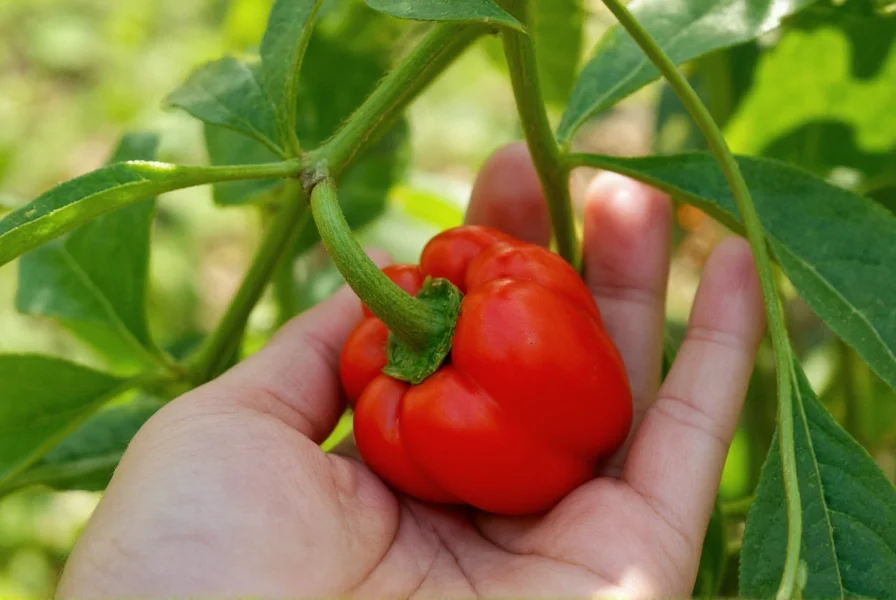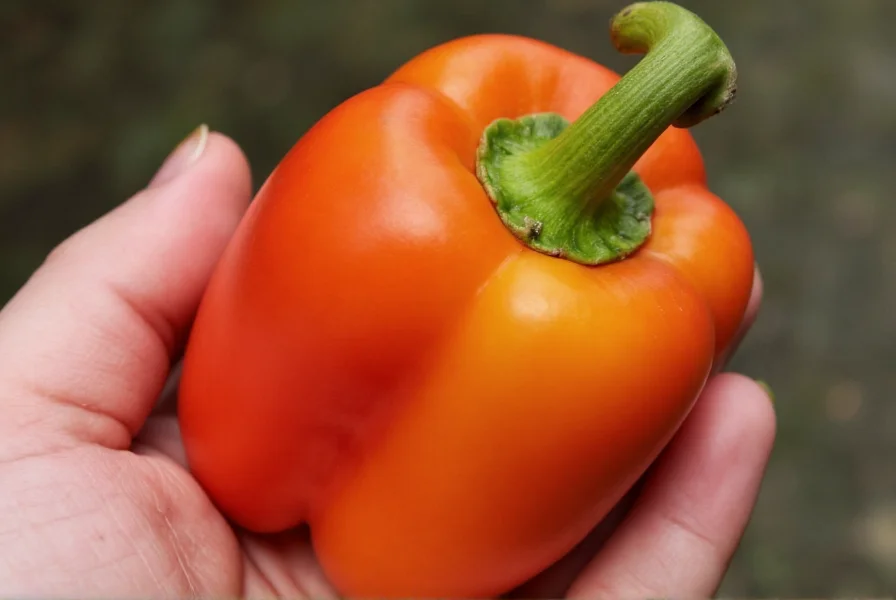The Sweety Drop Pepper has gained popularity among home gardeners and culinary enthusiasts for its distinctive characteristics and versatility. Unlike many ornamental peppers that offer visual appeal but little flavor, this variety delivers both aesthetic beauty and exceptional taste without any heat. Its elongated, teardrop-shaped fruits typically measure 2-3 inches in length and undergo a striking color transformation as they mature.
Physical Characteristics and Growth Pattern
What sets Sweety Drop Pepper apart visually is its elegant form. The fruits begin as deep green teardrops, gradually transitioning through yellow and orange stages before reaching their final vibrant red hue when fully mature. Each plant produces abundant clusters of these distinctive peppers on compact, bushy plants that typically reach 18-24 inches in height, making them suitable for both garden beds and container gardening.

Flavor Profile and Culinary Applications
With a Scoville heat unit rating of zero, Sweety Drop Pepper delivers pure sweetness without any capsaicin burn. Its flavor profile features bright, fresh notes with subtle fruity undertones that distinguish it from standard bell peppers. Chefs and home cooks appreciate its crisp texture and clean flavor that enhances rather than overpowers dishes.
Culinary professionals recommend using Sweety Drop Pepper in applications where visual presentation matters:
- As elegant garnishes for appetizers and main dishes
- In fresh salads where its shape and color progression create visual interest
- Stuffed with cheese or seafood mixtures for sophisticated hors d'oeuvres
- Quick-pickled for gourmet condiments
- Blended into sweet pepper sauces for pasta or seafood
| Characteristic | Sweety Drop Pepper | Standard Bell Pepper |
|---|---|---|
| Shape | Teardrop, elongated | Blocky, square |
| Size | 2-3 inches long | 3-4+ inches long |
| Heat Level | 0 SHU (completely sweet) | 0 SHU |
| Flavor Complexity | Bright, fruity notes | Milder, less complex |
| Plant Size | 18-24 inches (more compact) | 24-36 inches |
Growing Requirements and Care
For gardeners interested in cultivating Sweety Drop Pepper, understanding its specific growing requirements ensures optimal harvest. This variety thrives in warm conditions with consistent moisture and well-draining soil. When planning your garden layout, consider these essential growing tips for sweety drop pepper plants:
Start seeds indoors 8-10 weeks before your last expected frost date, maintaining soil temperatures between 75-85°F (24-29°C) for best germination. Transplant seedlings outdoors after danger of frost has passed and night temperatures consistently stay above 55°F (13°C). Space plants 18-24 inches apart in rows 24-36 inches apart to ensure adequate air circulation.
The ideal soil for sweety drop peppers features a pH between 6.0-6.8 with plenty of organic matter. Regular watering is crucial—maintain consistent moisture without waterlogging, as fluctuations can cause blossom end rot. Apply a balanced fertilizer every 3-4 weeks, switching to a phosphorus-rich formula once flowering begins to support fruit development.
Harvesting and Storage Techniques
Timing your harvest correctly maximizes the sweety drop pepper flavor experience. While technically edible at any stage, the peppers develop their fullest sweetness when allowed to fully ripen to red on the plant. Harvest by cutting the stem above the fruit rather than pulling, which can damage the plant.
For optimal storage, keep harvested peppers in the crisper drawer of your refrigerator for up to 2 weeks. For longer preservation, consider these methods:
- Freezing: Slice or dice peppers and freeze on a baking sheet before transferring to freezer bags
- Drying: Use a food dehydrator to create sweet pepper flakes for seasoning
- Quick-pickling: Preserve flavor while adding culinary versatility
- Roasting and freezing: Enhances sweetness for later use in sauces and stews
Nutritional Benefits and Health Properties
Beyond its culinary appeal, sweety drop pepper offers notable nutritional advantages. Like other sweet peppers, it's an excellent source of vitamin C (providing more than 100% of the daily recommended value per serving), vitamin A, and various antioxidants. The vibrant color progression indicates different phytonutrient profiles at various maturity stages.
Research suggests that consuming a variety of colored peppers provides broader health benefits than sticking to just one color. The carotenoids present in fully ripened red sweety drop peppers have been associated with improved eye health and reduced inflammation. Their natural sweetness makes them an excellent vehicle for encouraging vegetable consumption, particularly among children who might otherwise avoid peppers.
Common Growing Challenges and Solutions
While generally trouble-free, sweety drop pepper plants may encounter certain issues. Blossom end rot, caused by calcium deficiency often triggered by inconsistent watering, is the most common problem. Prevent this by maintaining even soil moisture and ensuring adequate calcium in your soil.
Watch for aphids and spider mites, particularly in dry conditions. A strong spray of water can dislodge these pests, or you can use insecticidal soap for more persistent infestations. Unlike many hot pepper varieties, sweety drop peppers rarely attract significant pest pressure due to their lack of capsaicin.

Seed Saving and Future Planting
One advantage of growing sweety drop pepper is the ability to save seeds for future seasons. Since this is an open-pollinated variety (not a hybrid), seeds will produce plants true to type. To save seeds, select fully ripe red peppers, remove the seeds, and allow them to dry thoroughly on a paper towel for 1-2 weeks before storing in a cool, dark place.
Properly stored seeds maintain viability for 2-3 years. When planning your garden rotation, remember that peppers should not follow other nightshades (tomatoes, eggplants, potatoes) in the same soil to prevent disease buildup.
Conclusion
The sweety drop pepper represents an excellent choice for gardeners seeking visually striking, flavorful, and completely non-spicy peppers. Its compact growth habit makes it suitable for smaller spaces, while its exceptional sweetness and elegant shape elevate culinary presentations. Whether you're a home gardener looking to expand your pepper collection or a cook seeking new ingredients to enhance your dishes, this variety offers distinctive qualities that set it apart from standard bell peppers.
What is the heat level of Sweety Drop Pepper?
Sweety Drop Pepper has a Scoville heat unit rating of 0, making it completely non-spicy. It's classified as a sweet pepper variety with no detectable capsaicin, the compound responsible for heat in peppers. This makes it ideal for those who enjoy pepper flavor without any spiciness.
How long does it take for Sweety Drop Pepper to mature?
Sweety Drop Pepper typically reaches maturity in 65-75 days from transplanting. The peppers will start green and gradually change color through yellow and orange stages before reaching their final red color when fully mature. For best flavor, allow the peppers to fully ripen to red on the plant.
Can Sweety Drop Pepper be grown in containers?
Yes, Sweety Drop Pepper is well-suited for container gardening due to its compact growth habit (typically 18-24 inches tall). Use a container that's at least 12 inches in diameter with good drainage. Container-grown plants will need more frequent watering and feeding than those in garden beds, but they thrive in sunny patios or balconies.
How does Sweety Drop Pepper differ from standard bell peppers?
Sweety Drop Pepper differs from standard bell peppers in several ways: it has a distinctive teardrop shape rather than a blocky form, typically grows smaller (2-3 inches long), offers more complex fruity flavor notes, and grows on more compact plants. While both are sweet with no heat, Sweety Drop Pepper provides visual interest with its elegant shape and color progression.
What are the best culinary uses for Sweety Drop Pepper?
The best culinary uses for Sweety Drop Pepper include fresh applications where its shape and color can be appreciated: as elegant garnishes, in salads, stuffed with fillings, or quick-pickled. Its crisp texture and clean sweetness make it ideal for raw preparations. Chefs often use it to add visual sophistication to dishes where standard bell peppers might be too bulky or visually ordinary.











 浙公网安备
33010002000092号
浙公网安备
33010002000092号 浙B2-20120091-4
浙B2-20120091-4